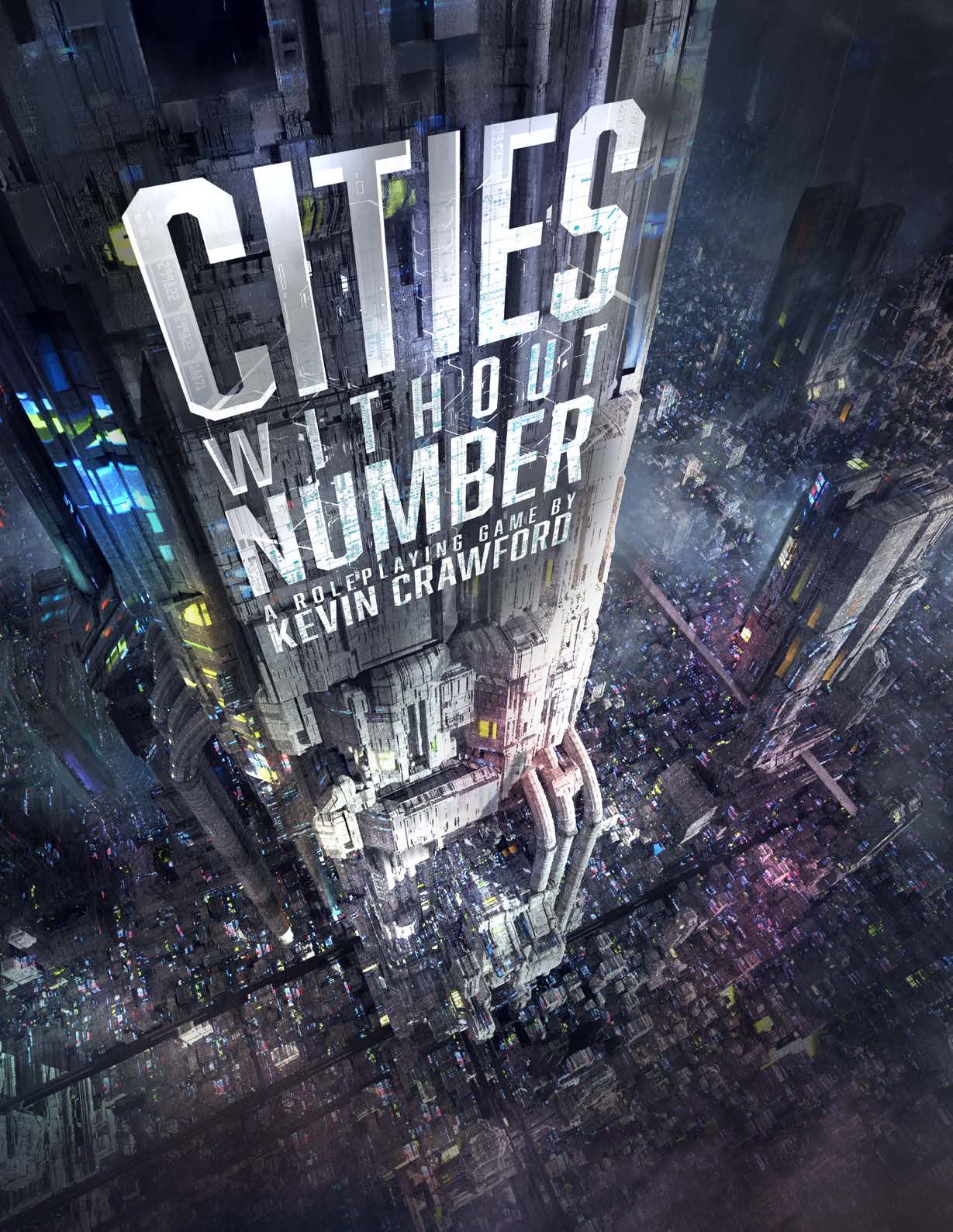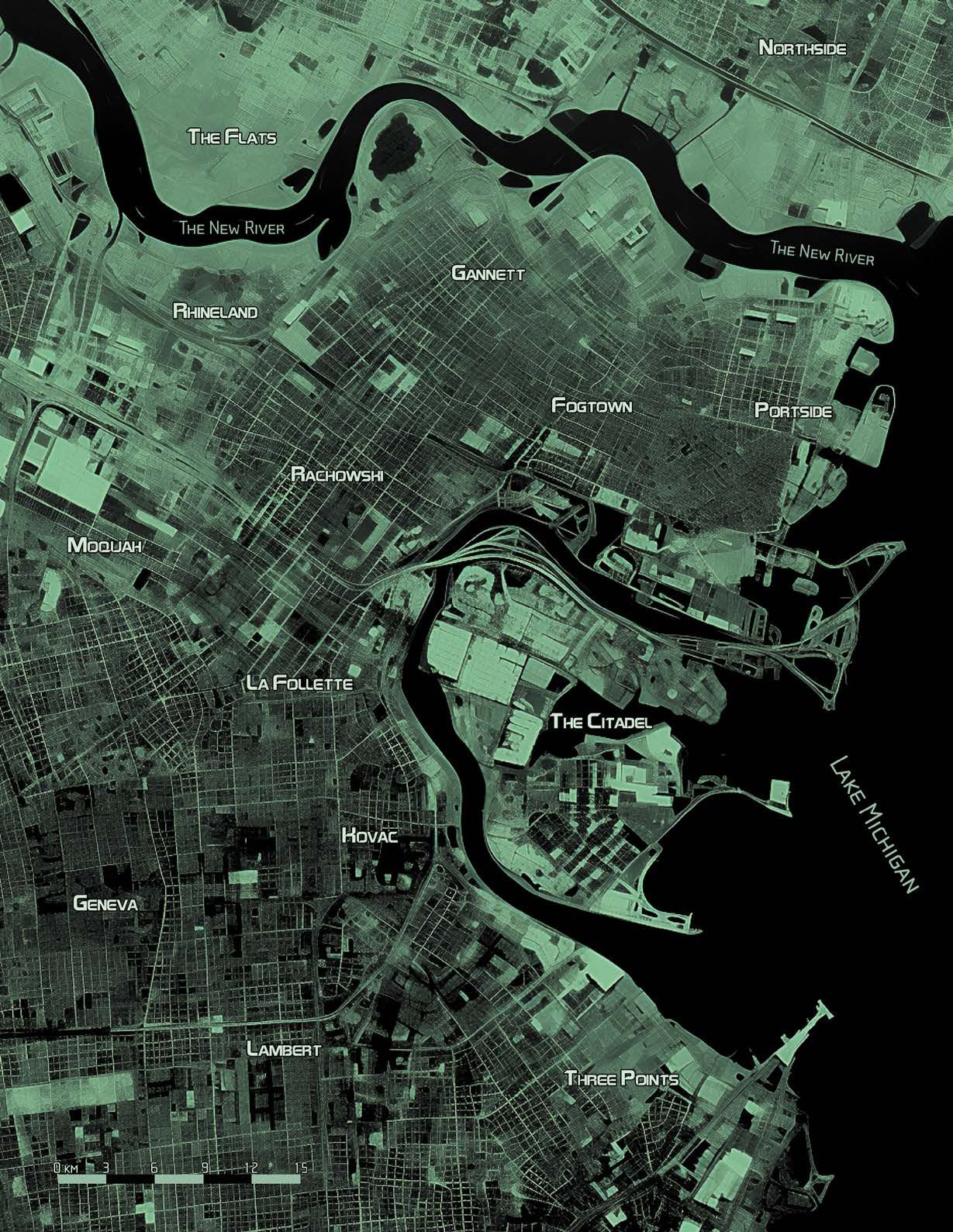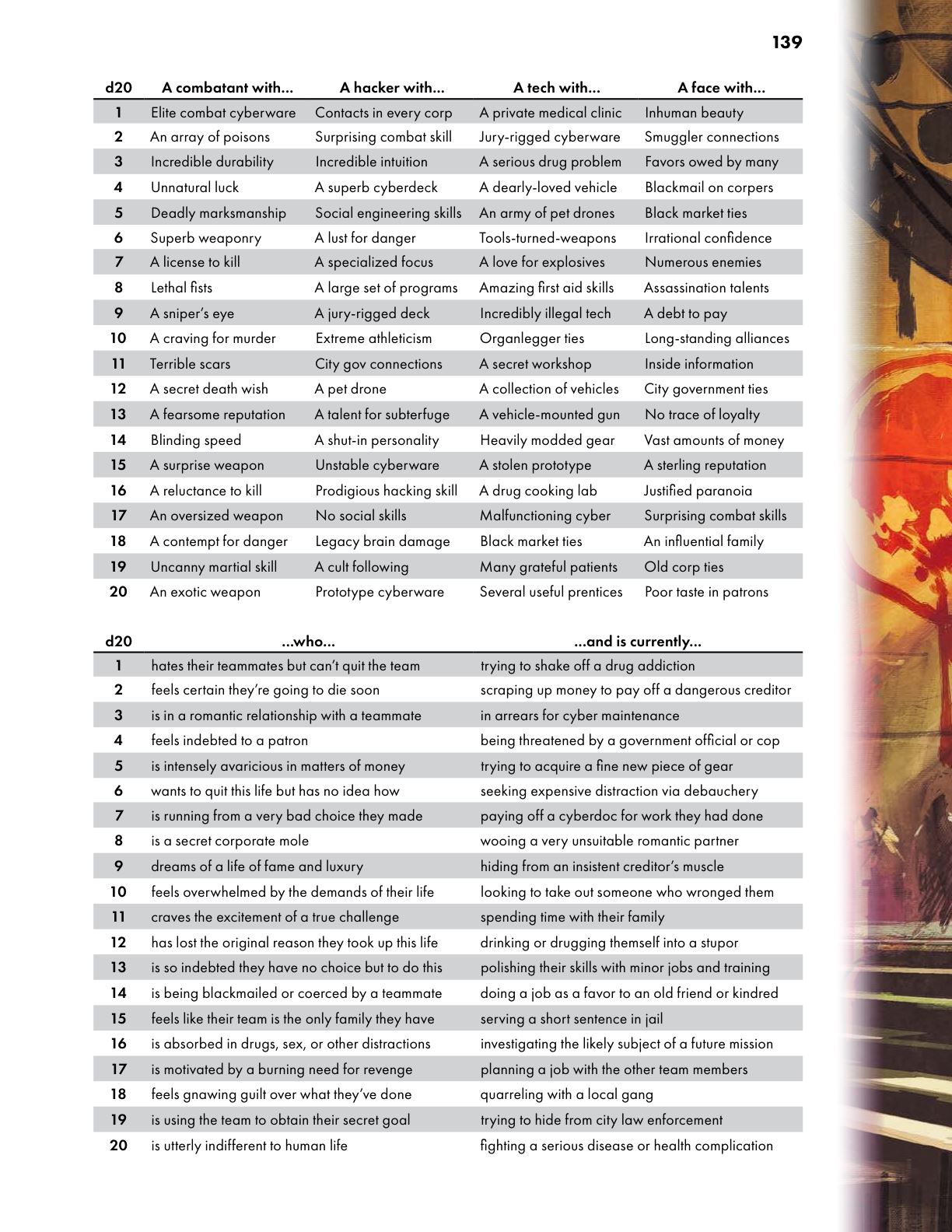Cities Without Number Review
Introduction
“Cities Without Number” (CWN) stands out in the crowded RPG market as a cyberpunk sandbox game that blends simplicity with incredible depth. Created by Kevin Crawford, it’s a game that focuses on player-driven storytelling, flexible mechanics, and world-building tools that make running a campaign not just manageable, but genuinely enjoyable. This review dives into my personal experience with the game, its standout features, and areas where it could improve.
Kevin Crawford has a long history of delivering high-quality RPG projects through Kickstarter, including Worlds Without Number (funded twice), Stars Without Number, and his upcoming Ashes Without Number, which explores a post-apocalyptic setting. These Kickstarters are not just about funding; they’re specifically designed to support the production of offset-printed books with Smyth Sewn Binding—an expensive but incredibly durable and high-quality format. While the deluxe editions are pricey, their extreme quality more than justifies the cost.
How I Got It
I first encountered Cities Without Number through its Kickstarter campaign, which aimed to fund a full offset run of the deluxe edition. I was drawn to the project after hearing glowing praise for Kevin Crawford’s earlier work, especially Worlds Without Number. The YouTuber Questing Beast reviewed WWN in detail (watch the review), and his insights about the game’s simplicity, sandbox mechanics, and world-building tools convinced me to back CWN.
Crawford also has a reputation for making his games widely accessible. One of the stretch goals for the CWN Kickstarter was to place the system reference document under an open Creative Commons license. This goal, achieved at the $200,000 funding level, ensures that the game is easy to access and open for third-party content creation. You can download the free version of the game here.
When the book arrived, I was in the middle of a campaign using Shadowrun 5e over a virtual tabletop (VTT). As someone with limited experience in Shadowrun’s dense ruleset (having only played a bit of 2e back in the 90s), the complexity was overwhelming, and our sessions felt bogged down. Switching to CWN was like flipping a switch—the game instantly became smoother, faster, and more enjoyable.
Description
Cities Without Number offers a cyberpunk RPG experience that focuses on skill-based character creation, rather than the rigid class structures common in many systems. Players can create archetypes that feel familiar to Shadowrun veterans (e.g., street samurai, deckers, riggers) but also take things further with the game’s Edges and Foci mechanics. These allow for truly unique characters, tailored to fit the story you want to tell.
The equipment list may not match Shadowrun’s exhaustive detail, but CWN makes up for it with its gear customization options. Weapons, armor, cyberware, hacking tools, and vehicles can all be modded and personalized, allowing players to tweak their loadouts to a satisfying degree.
The themes and style of the game are deeply rooted in the cyberpunk genre—futuristic and dystopian. The world CWN builds is one where corporate powers dominate, and the value of human life and human rights has plummeted. This creates a backdrop that is inherently mature and, at times, grim. Survival often demands objectionable choices, and the game doesn’t shy away from themes of work abuse, criminality, corruption, drug use, sex, and trafficking. These elements add depth and realism to the setting, but they also make CWN a game better suited for mature audiences.
The deluxe version of CWN includes a range of expanded content, as detailed on the DriveThruRPG product page:
- Cyberware quirks and features for particular megacorp product lines.
- Variant engineered human types for PCs who don’t fit the baseline mold.
- Optional rules for the psychological strain of Cyber Alienation.
- Optional rules for cheap street cyber, where every goon with a knife has wire beneath their skin.
- Spellcasting, spirit summoning, and magical items for GMs who want to add a dash of magic to their cyberpunk world.
Comments on Usage
When I transitioned from Shadowrun to Cities Without Number, the difference was night and day. The simpler mechanics allowed us to focus on storytelling rather than getting bogged down in rules. Setting the campaign in Athens, Greece—a futuristic version of my hometown—gave me the perfect backdrop to test the game’s world-building tools. These tools allowed me to blend personal ideas with random table generation, creating a vibrant cyberpunk city full of warring factions, shady corporations, and hidden secrets.
Currently, I’m running CWN for two groups: one in-person group and another on Foundry VTT. Both groups have taken to the system quickly, which is notable because my in-person group includes two players completely new to RPGs. CWN’s mechanics were easy for them to pick up, and it’s been rewarding to see them engage with the game.
We aren’t playing too frequently, so players haven’t advanced much yet. I don’t have real experience with higher levels of play; however, the skill-based system, the subtle changes in the mechanics for “experienced” characters, and the game’s lethality make it clear that this is more of a game where player skill and understanding lead to success rather than numbers on a character sheet. Power in CWN also comes from money—better equipment, cyberware, healing, and software—something I’ve always appreciated in a game. Unlike innate character powers, which can be harder for a GM to manage, item-based power allows for organic balancing within the narrative. An item lost or stolen can be replaced with something more appropriate for the campaign’s progression.
The cyberspace constructs in CWN seem more natural than the Shadowrun 5e implementation. However, CWN’s restriction of cyberspace to smaller networks can make the system feel a bit claustrophobic and more linear compared to the physical sandbox. While these two aspects have completely different focuses, the limited cyberspace networks in CWN feel less expansive, though they fit the game’s mechanics well.
On the VTT side, I encountered some challenges with the Foundry VTT module for CWN, as it wasn’t fully compatible with Foundry 12. This led me to make some development changes to adapt the module, and I’m considering offering these updates to the public once they’re polished.
Generation of Ideas
As with any other *WN product, the book comes with great tables to generate content and ideas for your table. Most of these idea generation tools are not just linear tables, but combinations which provide a wide variety of results to trigger your imagination and allow for nuanced differences between, otherwise similar, results. I am not a big proponent of products which just offer lists of fully fledged items, instead prefering this more multi-dimensional creation possibilities.
Example: Fleshing Out a District
District Name: Omonia Heights
Description: A decaying urban sprawl of towering apartment blocks, where neon signs barely mask the rot beneath. Gangs run the streets, and every building has been hacked into some kind of improvised fortress.
Factions:
- The Neon Wardens: A vigilante gang controlling the main avenues, enforcing their version of “justice.”
- DataSpire Solutions: A corporate front running illegal hacking operations.
Points of Interest: - The Glass Garden: A rooftop greenhouse turned black-market trading post.
- The Rusted Grid: An abandoned subway station turned into a gang hideout.
Plot Hook: A data courier has gone missing, and both factions are accusing each other. The players are hired to recover the courier—or what’s left of them.
Example: Skeleton of a Job
Job Title: “The Phantom Proxy”
Objective: Hack into a secured data vault to recover a file containing evidence of a corporate coup.
Complications:
- The vault is protected by a rival hacker group with advanced countermeasures.
- A faction (The Neon Wardens) gets wind of the operation and tries to hijack the heist.
Timers: - Security lockdown triggers after 10 in-game minutes unless the players disable it.
Reward: - 20,000 credits and potential favors from a powerful employer.
Twist: - The data is fake, designed to implicate the client in a larger conspiracy.
Pros and Cons
Pros:
- Simple, skill-based mechanics that are easy to learn and use.
- Flexible character creation with Edges and Foci for unique builds.
- Gear customization options that allow for personalization and tweaking.
- Engaging damage mechanics (Trauma Dice and Shock Damage) that increase tension and lethality.
- Skill system that supports role-playing and problem-solving beyond combat.
- Outstanding tools for world-building and adventure generation.
- Motivates players to stay active with resource management for cyberware and gear.
- Sandbox-friendly design that encourages player-driven storytelling.
- Themes that add depth and realism to the setting.
- Player skill and understanding drive success more than raw stats.
- Power from items allows GMs to organically balance gameplay.
Cons:
- Equipment lists are less extensive compared to Shadowrun.
- Cyberspace mechanics may feel too simplistic for hacking-focused players.
- Limited cyberspace networks can feel claustrophobic compared to the physical sandbox.
- Adventure pacing can drag if players over-plan; timers help but require careful balancing.
- Mature themes (corporate abuse, criminality, trafficking) may not suit all groups.
Audience
If you’re a GM who loves creating your own worlds, running sandbox campaigns, or experimenting with unique character builds, Cities Without Number is a fantastic choice. It’s especially appealing for groups who find Shadowrun or other cyberpunk RPGs too complicated but still want to explore the genre. Even if you’re not planning to run CWN, its world-building tools alone are worth the price.
Where to Buy
You can grab Cities Without Number from DriveThruRPG (free version) or the deluxe version. For more from Kevin Crawford, visit his Sine Nomine Publishing store.
Gallery
Here are some images from the book and the table tools I used for the campaign:



